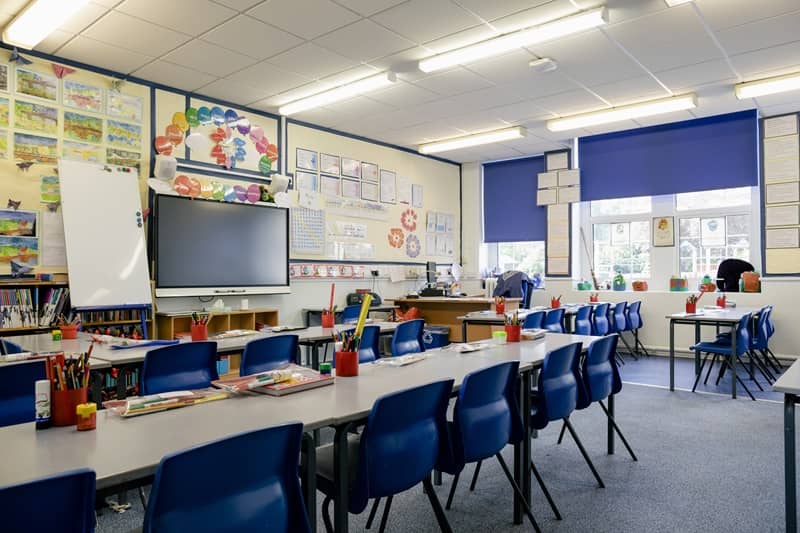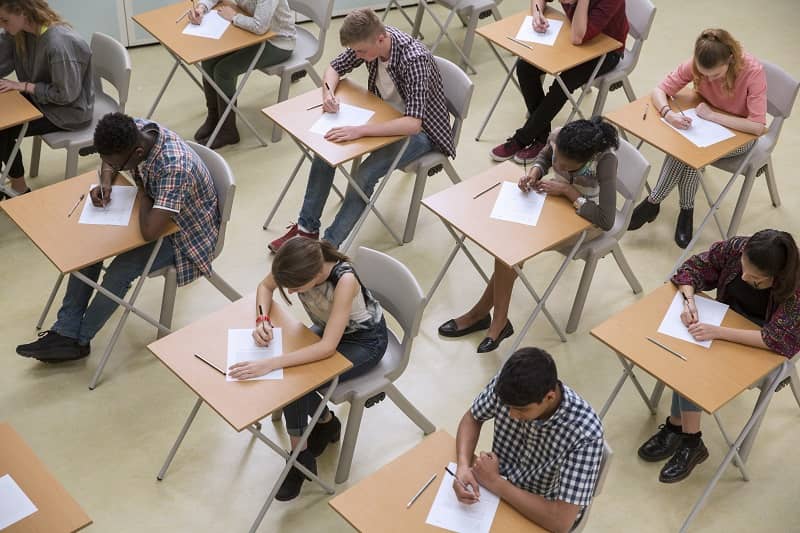By Eric Fruits, Ph.D.
Critics of education savings accounts, or ESAs, claim that ESA programs “defund” public schools. In particular, they fear an ESA program would reduce state funding for public schools. In contrast to these fears, it is likely that an ESA program in Oregon would lead to increased per-student state funding for students who choose to attend public schools.
Since 2015, the Oregon Legislature has considered several concepts to introduce ESAs. ESAs allow parents to withdraw their children from public district or charter schools and receive a deposit of public funds into government-authorized savings accounts with restricted, but multiple, uses. Those funds can be used to cover private school tuition and fees, online learning programs, private tutoring, community college costs, higher education expenses and other approved customized learning services and materials.
Since the COVID-19 pandemic, the number of states offering ESAs has doubled from four states to eight. Because of the widespread popularity of ESAs and other programs, 2021 was widely recognized as the “Year of School Choice.” In 2022, Arizona expanded its “Empowerment Scholarship Accounts” program to all children, creating the country’s first “universal” ESA program. The Arizona legislature’s analysis of its universal ESA program provides a guide to the expected costs of enacting a similar program in Oregon.
Critics of ESAs, such as teachers’ unions and local school district officials, often claim that ESA programs would “defund” public schools throughout the state. For example, the Oregon Education Association testified in written comments in 2017 that ESAs would harm public schools by “siphoning public resources to private operators.” In the same hearing, the Oregon School Boards Association commented, “when schools already struggle with insufficient funding, further siphoning off funding could do tremendous damage.”
Contrary to these fears, evidence indicates that rising public school enrollment puts the greatest strain on public school funding. For example, research indicates that states with the largest increases in public school enrollment tended to experience the biggest decreases in per-student spending. Moreover, states with smaller enrollment increases—if not declines—tend to be the states that have most significantly increased their K-12 spending per student.
It should be clear that Oregon’s public schools are not “underfunded.” Since the 2009-11 biennium, state appropriations to the State School Fund have increased by more than 60%. Per-student appropriations have grown by 4.2% a year, or roughly double the rate of inflation.


Even a “worst case” scenario of relatively large-scale ESA participation shows that per-student funding for public school students would increase under an Oregon ESA program. In addition, the cost of providing a universal ESA program would increase state spending on K-12 education by only 3%.
In the last K-12 budgeting session, the legislature allocated $4.7 billion for the 2022-23 school year, or about $8,400 per student. Let’s assume an ESA program would allow any student not enrolled in public school to obtain $8,400 from the state to deposit in an education savings account. Eligible students would include those who are currently enrolled in a private school, who are homeschooling, or who want to transfer from the public school system to a private school or homeschool.
Based on Arizona’s long experience running an ESA program, the state’s fiscal analyst estimated the fiscal impact of the universal ESA on the state’s budget. The estimate is based on the following observations:
- For existing private school and homeschool students, ESA participation would begin at 5% and rise to 20% within three years; and
- Approximately 4.2% of current public school students would shift to private schools or homeschooling as a result of universal ESA eligibility.
Using these observations, we can estimate the fiscal impact of a universal ESA program in Oregon that would provide $8,400 per student, summarized in the table below. The analysis assumes that 5% of current public school students would shift to private schools or homeschooling as a result of universal ESA eligibility, which is slightly higher than Arizona’s experience. Of these students, it’s assumed that 95% would successfully enroll in the ESA program. For existing private school and homeschool students, it’s assumed that 20% would participate in the ESA program.

The shift from public schools to non-public education options would reduce the demand for state spending on these schools by $231 million since public schools no longer would be teaching these students. Instead, the state would deposit $219 million into these students’ ESAs. Because it’s assumed only 95% of eligible students would successfully enroll in the ESA program, the state would save $12 million.
Assuming a 20% ESA participation rate for existing private school and homeschool students indicates approximately 18,000 students would participate, at an additional cost of $151 million to the state. Accounting from the $12 million in savings described above, the net fiscal impact on the state would be an additional $140 million in spending, or a 3% increase in state spending on K-12 education, which is smaller than the average annual increase over the past decade.
Contrary to critics’ concerns, school choice programs such as ESAs do not “defund” public schools. Because the decrease in public school spending is smaller than the decrease in public school enrollment, a universal ESA program in Oregon would lead to a 2% increase in per-student spending for the students who remain in public schools.
Eric Fruits, Ph.D. is Vice President of Research at Cascade Policy Institute. He is also an adjunct economics professor at Portland State University.












